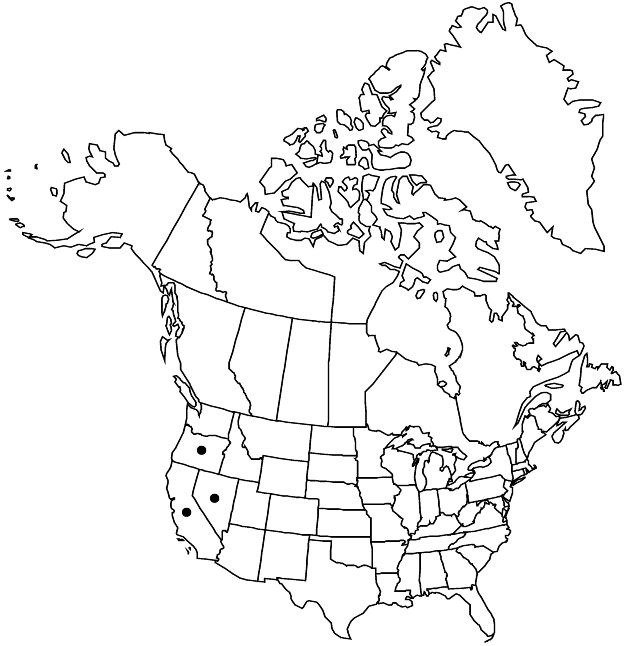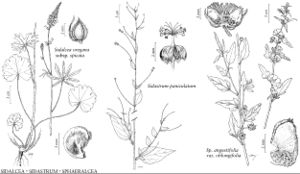Sidalcea oregana subsp. spicata
Perenn. Sp. Sidalcea, 64. 1957.
Plants 0.3–0.8 (–0.9) m, with thick taproot, woody, branching crown. Stems branched or not, solid, base usually softly bristly-hirsute, hairs 1–2 mm, or stellate-hairy, sometimes glabrous. Leaves: stipules linear or lanceolate, 4–6 (–9) × 0.5–1 mm; petioles of basal leaves (5–) 10–20 (–30) cm, 3–4+ times as long as blade, reduced distally and distalmost leaves nearly sessile; blade reniform-orbiculate, cordate, unlobed and margins merely crenate or shallowly 5–7 (–9) -lobed, progressively more deeply lobed distally, 3–10 (–12) × 3–13 cm, lobes ternate or pinnately lobed, distalmost blades 3–5-lobed to base, lobes narrowly lanceolate, margins often entire, surfaces glabrous or sparsely appressed-hairy with simple hairs and/or minute, stellate hairs. Inflorescences spiciform, rachis apex usually acute in bud, usually dense, calyces overlapping, unbranched or branched, 20+-flowered, 10–15 cm, overlapping in flower and fruit (less often fruits spaced); primary peduncles usually equaling or shorter than mature inflorescence; bracts linear, undivided, 4–6 mm, usually longer than young flower buds and conspicuous, much longer than pedicels, shorter than to nearly equaling calyx. Pedicels 1–2 (–3) mm. Flowers bisexual or unisexual and pistillate, plants gynodioecious; calyx (3.5–) 5–6 (–7) mm, not accrescent, usually densely stellate-puberulent, sometimes bristly with hairs 0.5–1 (–2.5) mm; petals pink to rose-pink or magenta, pistillate 6–10 mm, bisexual 10–15 (–20) mm; staminal column 4–6 mm, hairy; anthers white to pinkish; stigmas 7–9. Schizocarps 4–7 mm diam.; mericarps 7–9, 2.5–3 mm, back moderately glandularpuberulent, usually smooth, margins rounded, sides sometimes lightly reticulate-veined, mucro 0.1–0.5 mm. Seeds 2 mm. 2n = 20, 40.
Phenology: Flowering (Jun–)Jul–Aug(–Sep).
Habitat: Moist, open meadows, streamsides, subalpine forests, yellow pine slopes
Elevation: 1100–3000 m
Distribution

Calif., Nev., Oreg.
Discussion
Subspecies spicata has frequently been recognized as a distinct species but it clearly fits within the Sidalcea oregana complex. The extremes are readily recognizable, but the variation often makes for confusion with other subspecies, as well as with S. setosa. Similar species and subspecies have either been confused with it or included within it, including subspp. eximia, hydrophila, and valida, and even S. nelsoniana. Subspecies spicata is distinguished primarily by its elongated bud bracts, dense spicate inflorescences, essentially smooth mericarps, relatively small calyx, spreading-hirsute stem base, and lack of rhizomes. It is more restricted in range and elevation than subsp. oregana and occurs in the mountains from Mono County, California, north to Jefferson and Union counties, Oregon, and to Douglas and Washoe counties, Nevada.
Selected References
None.
Lower Taxa
"elongating" is not a number."-4+timesaslongasblade" is not declared as a valid unit of measurement for this property."elongated" is not a number.
